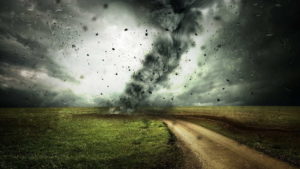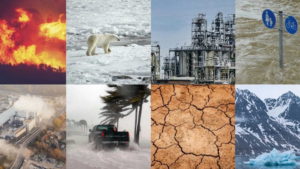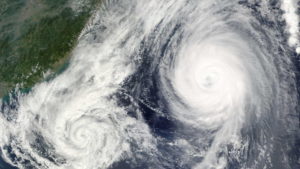The important and impactful climate changes example requires serious attention on a worldwide scale and not only the governments but also at the individual level this issue should be addressed.
Climate changes 2023 and even in the forthcoming years is the truth with the necessity of group action. Sadly, any denying would cause horrible harm that would be out of human control because where else we would go.
The threat of climate change is now a present problem that is affecting everyone on the planet. The effects of global warming on everything are far-reaching, and we need to protect the future of our world. Therefore, it is essential that we should be aware of these challenges.
What Is The Cause Of Climate Changes?

Well, for modern climatic issues, the answer to what is the cause of climate changes is human action primarily. The rise in greenhouse gases in the Earth’s atmosphere is the main driver of climate change. The greenhouse effect, sometimes known as global warming, is caused by these gases trapping solar heat and preventing it from escaping back into space.
Human actions, mainly the combustion of fossil fuels (coal, oil, and natural gas), deforestation, and different industrial processes, are the main causes of the current climate changes 2023. Following are the primary reasons for what is the cause of climate changes?
- CO2 emissions from the combustion of fossil fuels for industrial, transportation, and energy purposes
- Coal, oil, and natural gas production and transportation all result in the release of methane.
- Industrial and agricultural processes, as well as the burning of fossil fuels and solid waste, all produce nitrous oxide.
- As carbon sinks, trees and forests remove CO2 from the atmosphere. The carbon that is held in trees is released back into the atmosphere when they are burned or cut down.
- The utilization of synthetic gases and the manufacture of cement are two industrial operations that release greenhouse gases like CO2 and nitrous oxide.
- As organic waste breaks down anaerobically, landfills and waste treatment facilities produce methane.
- Natural elements like volcanic eruptions and fluctuations in solar radiation can also affect the climate, even though human actions are the primary cause of current climate change or climate changes 2023.
For Climate changes example, The growth in greenhouse gases brought on by these human activities has intensified the greenhouse effect, which has sped up the last century’s rise in global temperatures.
Rising sea levels, more frequent and severe heat waves, different precipitation patterns, and more extreme weather events are all effects of the phenomena known as global warming.
Reduced greenhouse gas emissions, the switch to cleaner energy sources, the preservation and restoration of forests, and the adoption of sustainable land use and waste management techniques are all necessary to climate control.
A Simple Guide To Climate Changes Example

Here are the series of Climate change instances that are interconnected and influence each other. It is true that a variety of climate change-related elements can interact with one another and have an impact on one another. One component may have an indirect or direct impact on another, leading to a network of effects.
Be it blowing up feedback loops, extreme weather, ocean and climate change, sea level rise, glaciers melting, thermal expansion of saltwater, biodiversity loss, air pollution, economic and social effects, or technological solutions, these elements come up like this or even severe actions.
To create effective global solutions to handle climate change completely, it is vital to understand these linked aspects.
Let us examine one by one,
The Melting of Glaciers
Climate changes example, the glaciers is an obvious sign of rising temperatures.
Imagine a future where massive glaciers that have stood for centuries are now nothing more than thin remains. This is the situation we are now in climate changes 2023. Melting glaciers, like those in the Himalayas and Antarctica, are a symbol of the fast changes our planet is undergoing as a result of global warming. These icy giants’ hideaway raises sea levels, which has an effect on coastal areas all around the world. If this series continues at a high pace without climate control, the world will become horrible.
Agricultural Security and Food
Production of food is threatened by rising temperatures and unpredictable weather patterns. Crop production is declining, while the ranges of pests and diseases are growing. This risks the safety of the world’s food supply, raising the possibility of food shortages and price increases that disproportionately affect vulnerable people. Food supply also causes several other problems in society that humans can’t handle at a large scale; therefore, global solutions are a must.
Extreme weather events: Deadly and unpredictable
Extreme weather events in Climate changes example, It is a matter of when, not if, there will be an increase in extreme weather events. Their frequency and intensity will be increased by climate changes 2023. Hurricanes and wildfires are just two examples of devastating and increasingly common extreme weather disasters. These disasters are made worse by climate change, endangering people’s lives, their homes, and ecosystems. The recent years have seen several instances of deadly wildfires, hurricanes, floods, and storms in countries like Australia, Pakistan, and even South Korea.
Water shortage in World

This is something horrible that is happening and even in the future if it gets worse.
Worldwide problems with water scarcity are being made worse by climate changes 2023. Freshwater supplies are under pressure due to altered precipitation patterns, protracted droughts, and higher evaporation rates. This has an effect on millions of people’s access to clean drinking water, sanitation, and agriculture, which causes wars and humanitarian catastrophes.
Sea Level Rise: A Threat to Coastal Communities
Sea level rise is a current reality, not a hypothetical disaster. On the front lines of this problem are coastal villages.
Coastal towns are seriously threatened by the rising sea levels that are being caused by the melting of glaciers and the thermal expansion of seawater. Cities like Miami and small island nations like Tuvalu are already feeling the effects. Without prompt action, valuable coastal ecosystems will be permanently destroyed, displacing millions of people.
A Silent Threat to Marine Life: Ocean Acidification
Coral reefs and fisheries are among the marine ecosystems that are disrupted by ocean acidification.
Ocean acidification results from a major percentage of the increased atmospheric carbon dioxide absorbed by the oceans. Marine life is at risk from this process, especially those with calcium carbonate shells like coral reefs and shellfish. The consequences affect millions of people whose livelihoods depend on the oceans in addition to underwater habitats.
Loss of Biodiversity: Effects on Ecosystems
Ecosystems become less resistant to climate change due to the loss of biodiversity.
An alarming number of species are going extinct as a result of climate change. In addition to upsetting delicate ecosystems, this loss of biodiversity makes it harder for them to adjust to changing environmental conditions. The fragile harmony of nature is disintegrating, endangering the entire globe.
Air Quality: A Double Crisis
The battle against climate change also involves the chase of cleaner air. In addition to improving air quality, reducing greenhouse gas emissions also saves lives.
In addition to contributing to climate change, burning fossil fuels produces harmful air pollution. Each year, millions of premature deaths are brought on by ground-level ozone and particulate matter. Addressing climate change offers a chance to boost public health while also halting environmental deterioration.
Impacts on human health: The price of inaction
Everywhere, people’s health is at risk due to climate change, from heat-related disorders to the spread of diseases.
Climate change is a public health emergency as well as an environmental problem. Infections brought on by the heat might result from rising temperatures and diseases like malaria and dengue fever can spread more easily due to shifting weather patterns. The disproportionate impact on vulnerable communities emphasizes how urgent it is to solve climate change.
The Storage of Carbon
By absorbing carbon dioxide, wetlands, oceans, and forests act as natural carbon sinks to slow down climate change. Deforestation, ocean acidification, and wetland destruction, on the other hand, are releasing carbon dioxide back into the sky. For the purpose of sequestering carbon, these ecosystems must be preserved and restored.
How to tackle the rising Climate changes example?
Technical Solutions
Innovative technologies provide hope in addition to lowering pollutants. Climate change can be significantly eased through improvements in renewable energy, carbon capture and storage, and sustainable agricultural methods. These solutions are open to support and investment from governments, companies, and private citizens.
Cooperation and International Accords
Global issues like climate change necessitate cooperation between nations. A historic agreement, the Paris Agreement, was adopted in 2015 with the goal of keeping global warming far below 2 degrees Celsius over pre-industrial levels. In order to fulfill their obligations and address the global problem, nations must cooperate.
Economic Change and Employment Opportunities
Economic development can be boosted and new job opportunities can be generated by the shift to a low-carbon economy. Investments in green technologies, sustainable infrastructure, and renewable energy sources can help us move away from our reliance on fossil fuels and toward a future that is more robust and sustainable.
Public Awareness and Youth Activism
Greta Thunberg and other young activists have started a global youth movement calling for climate action. Their commitment has increased public awareness and put pressure on organizations to accept responsibility for their role in climate change.
Strategies for Adaptation
Societies must invest in adaptation measures in addition to mitigation initiatives. As part of this, infrastructure must be made resilient, early warning systems for extreme weather must be developed, and agricultural techniques must be improved to survive shifting environmental circumstances.
Individual Deeds Count
Although structural change is important, individual efforts also have a big impact. Simple actions like cutting back on energy use, taking public transportation, eating less meat, and supporting climate-friendly policies can have a significant influence on lowering greenhouse gas emissions when taken collectively.
Outlook for the future
Despite the overwhelming challenges posed by climate change, there is still hope. We can achieve a sustainable future by utilizing human intellect, working together, and being dedicated to preserving the environment. We can work together to prevent the worst effects of climate change and create a better world for future generations by addressing the examples of climate change covered in this handbook.
The Ending Notes With A Call To Action
Climate change is not an isolated instance but rather a complex problem that necessitates quick action. The moment is here to take action.
We can lessen the worst effects of climate change by cutting greenhouse gas emissions, switching to renewable energy sources, and adopting sustainable habits. To preserve a sustainable future for future generations, we must work jointly as people, communities, and countries.
It is also important to consider, the climate tragedy is a present-day issue rather than a problem for the future.
The world must come together to confront climate change with fixed beliefs and a shared commitment to preserving our planet, enlightened and motivated by these examples. What we do now will determine the legacy we leave for future generations. Climate change is a serious crisis with many facets that have an impact on all facets of our lives.
As factors of the world, it is our duty to protect the environment for present and future generations by doing a lot about Climate changes example and climate control.













